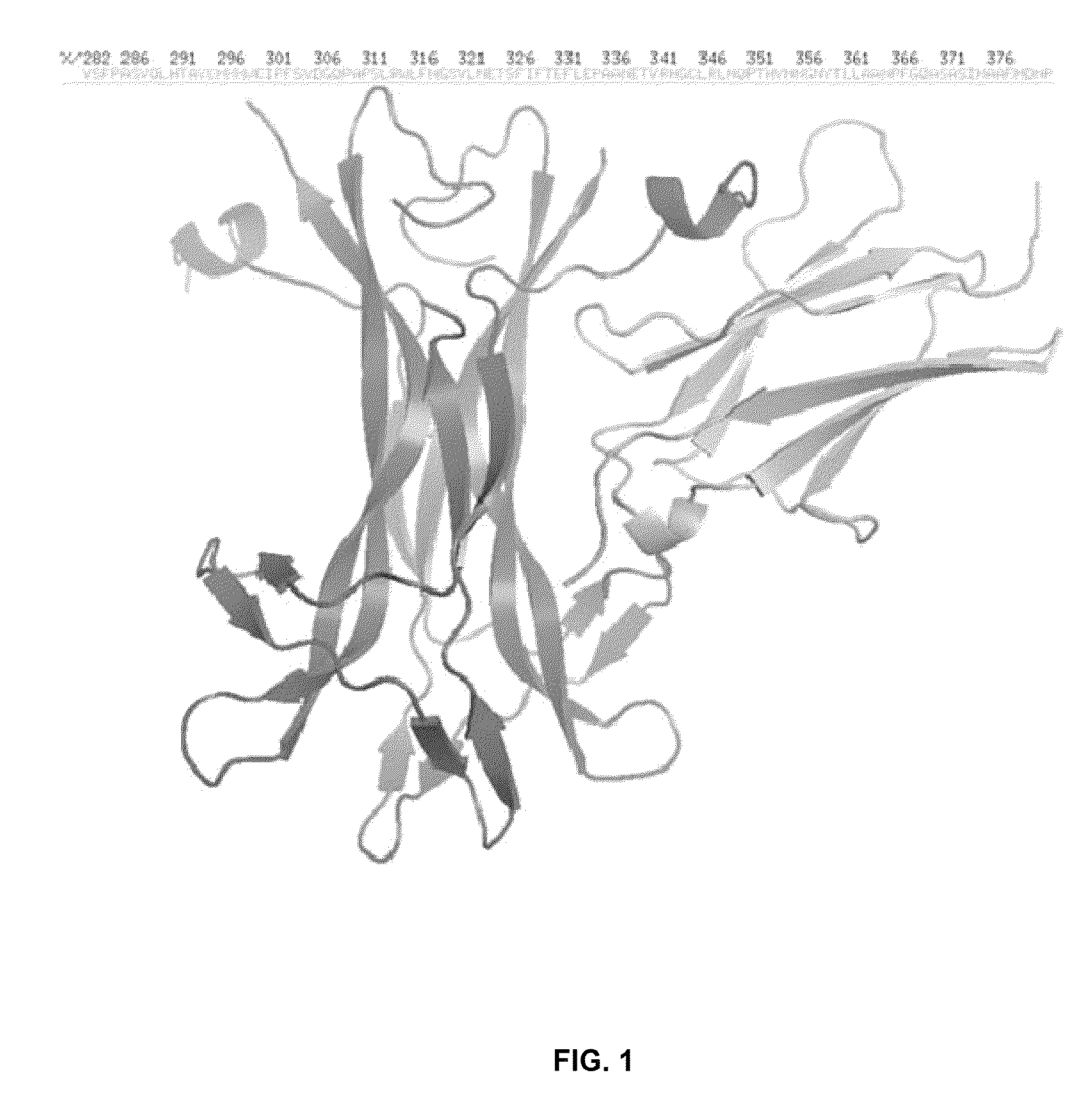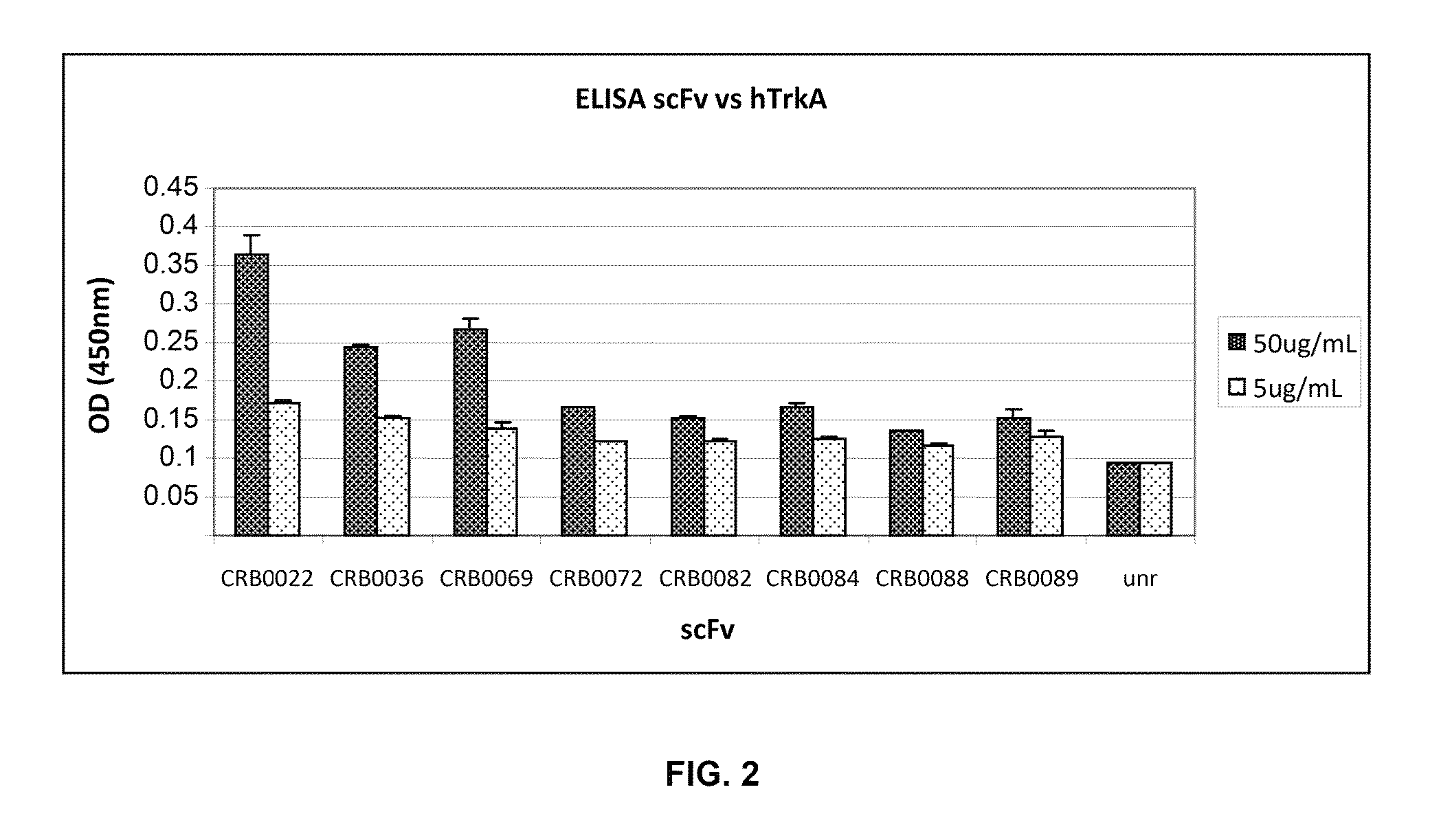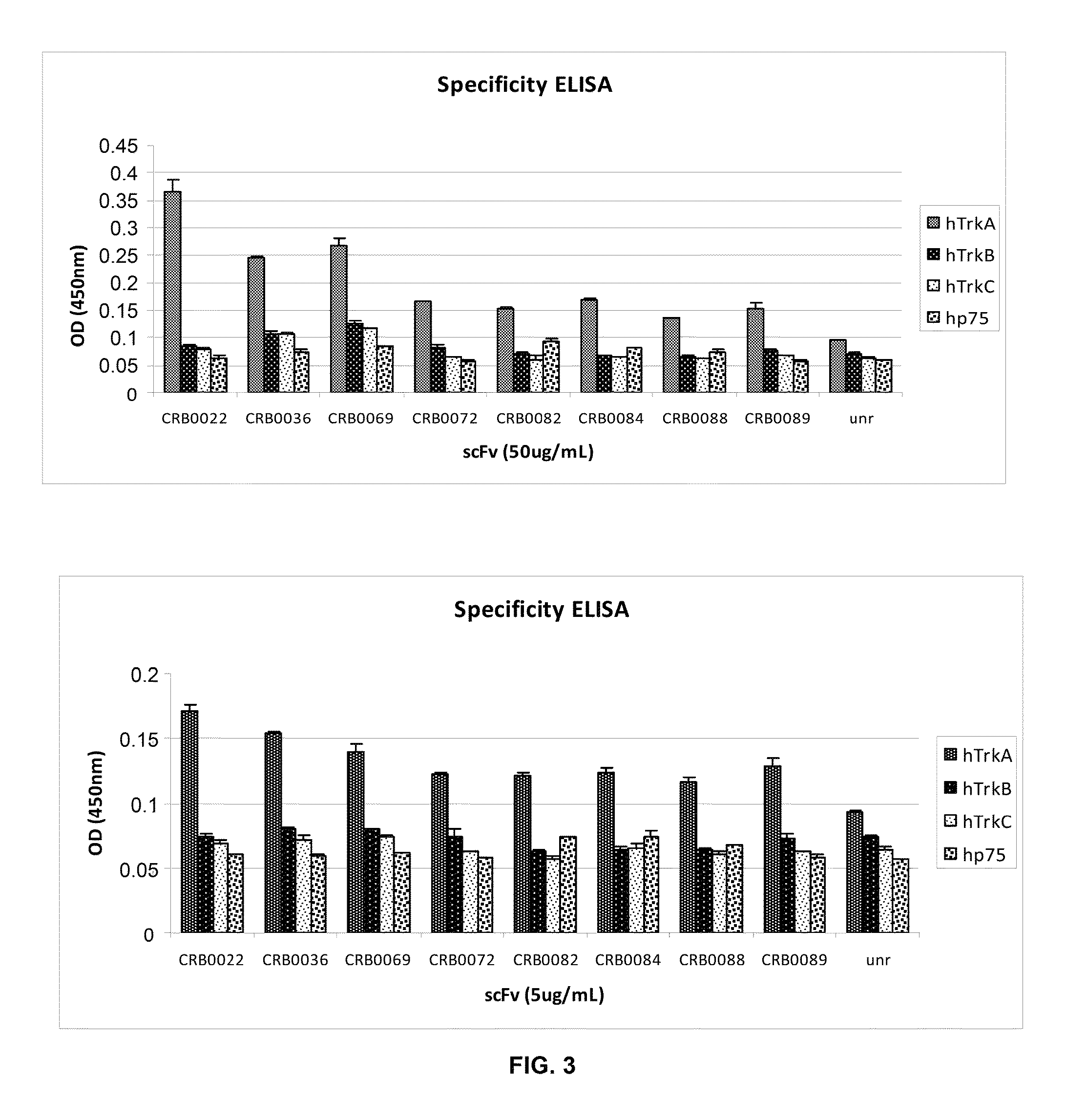Anti-TrkA antibodies, derivatives and uses thereof
a technology of anti-trka antibodies and derivatives, applied in the field of anti-trka antibodies, can solve the problems of persistent pain, major health problems, and inability to inhibit trka-triggered activities, and achieve the effects of reducing the risk of cardiovascular disease, reducing the risk of trka agonists, and increasing the risk of trka-triggered activities
- Summary
- Abstract
- Description
- Claims
- Application Information
AI Technical Summary
Benefits of technology
Problems solved by technology
Method used
Image
Examples
examples
Materials and Methods
SPLINT Library from Human Lymphocytes
[0146]The development of therapeutic antibodies for use in the treatment of human diseases has long been a goal for many researchers in the antibody field. One way to obtain these antibodies is through SPLINT libraries constructed from human lymphocytes. SPLINT technology express human scFv (single chain antibody fragment) libraries cloned in pMV1 vector, a vector derived from pLinker220 vector (Visintin et al., 2004. J Immunol Methods. 290:135-153.), as fusion to the VP16 activation domain. The variable regions are linked with a small peptide linker (SGGSTSGSGKPGSGEGSSGT, SEQ ID NO: 93). pMV1 contains LEU2 gene that permits maintenance of the plasmid and selection on media lacking leucine in yeast strain L40 and the bla gene that permits the selection of plasmid in E. coli.
[0147]For construction of human SPLINT libraries the peripheral blood donations from one hundred, non-immunized donors were used. Approximately 2-20 ml o...
PUM
| Property | Measurement | Unit |
|---|---|---|
| concentration | aaaaa | aaaaa |
| concentrations | aaaaa | aaaaa |
| temperature | aaaaa | aaaaa |
Abstract
Description
Claims
Application Information
 Login to View More
Login to View More - R&D
- Intellectual Property
- Life Sciences
- Materials
- Tech Scout
- Unparalleled Data Quality
- Higher Quality Content
- 60% Fewer Hallucinations
Browse by: Latest US Patents, China's latest patents, Technical Efficacy Thesaurus, Application Domain, Technology Topic, Popular Technical Reports.
© 2025 PatSnap. All rights reserved.Legal|Privacy policy|Modern Slavery Act Transparency Statement|Sitemap|About US| Contact US: help@patsnap.com



